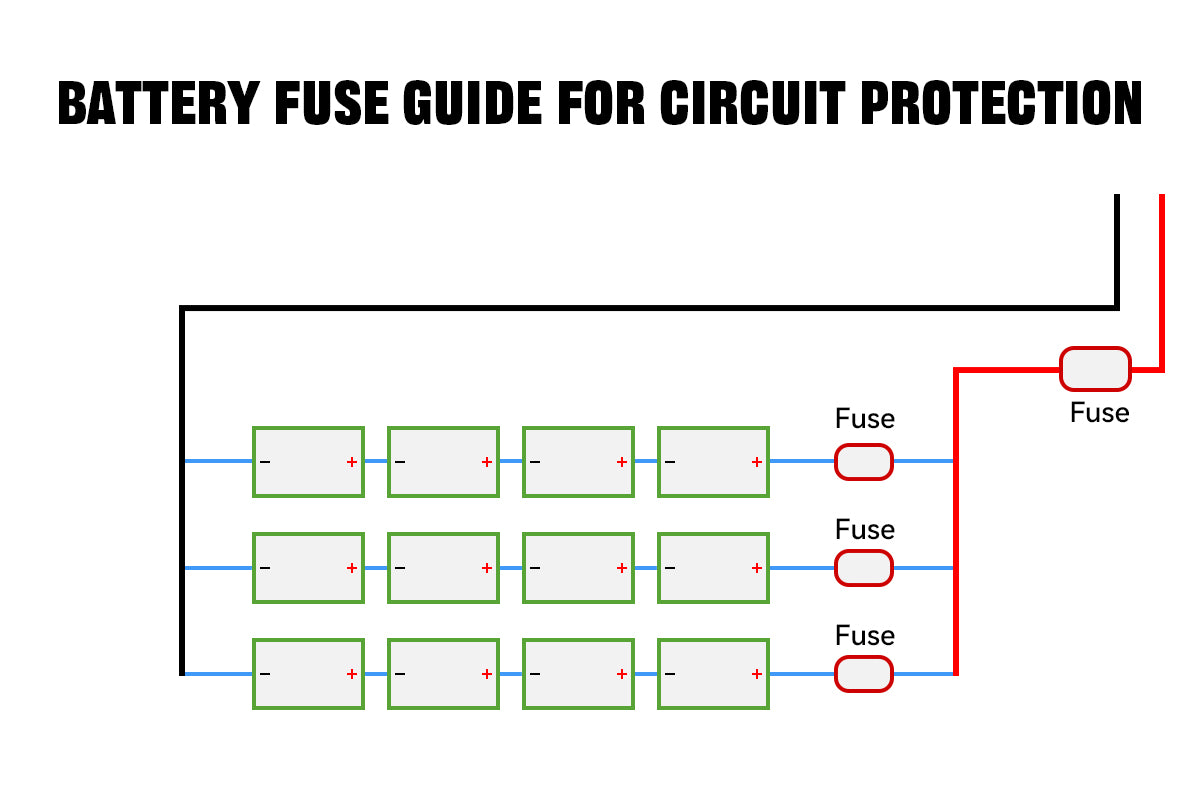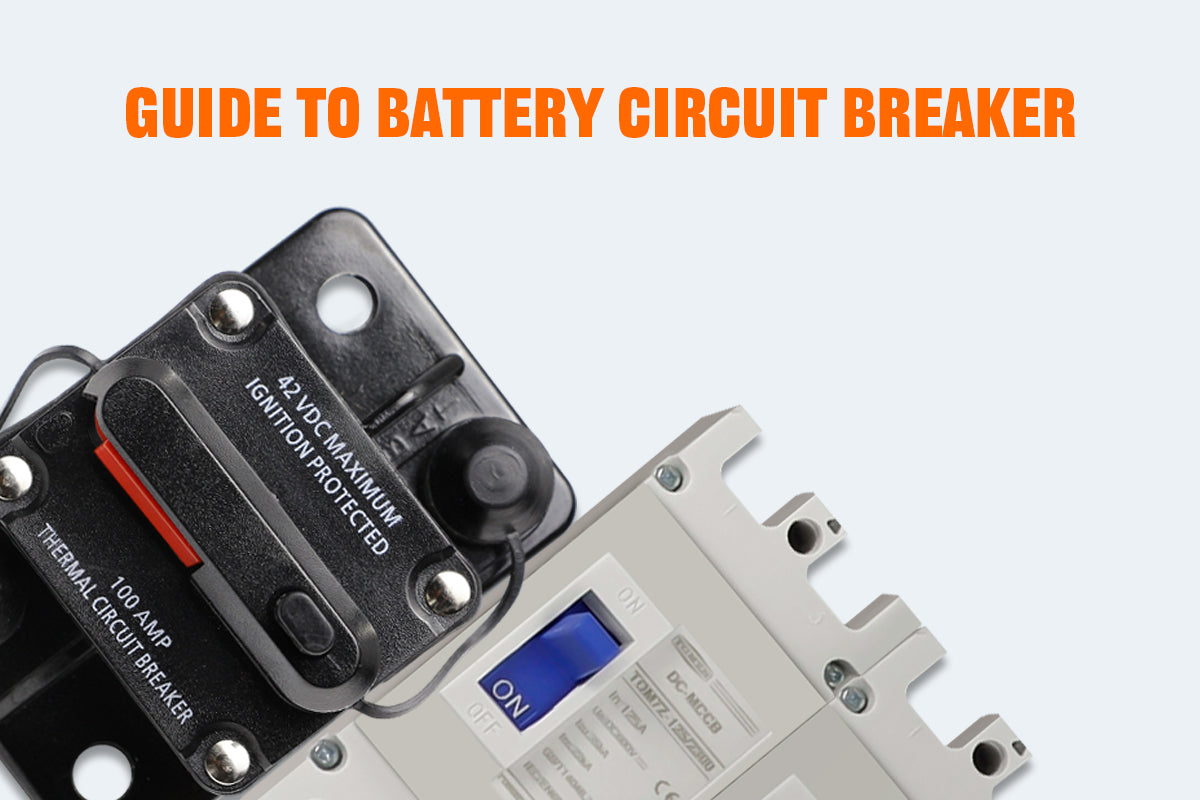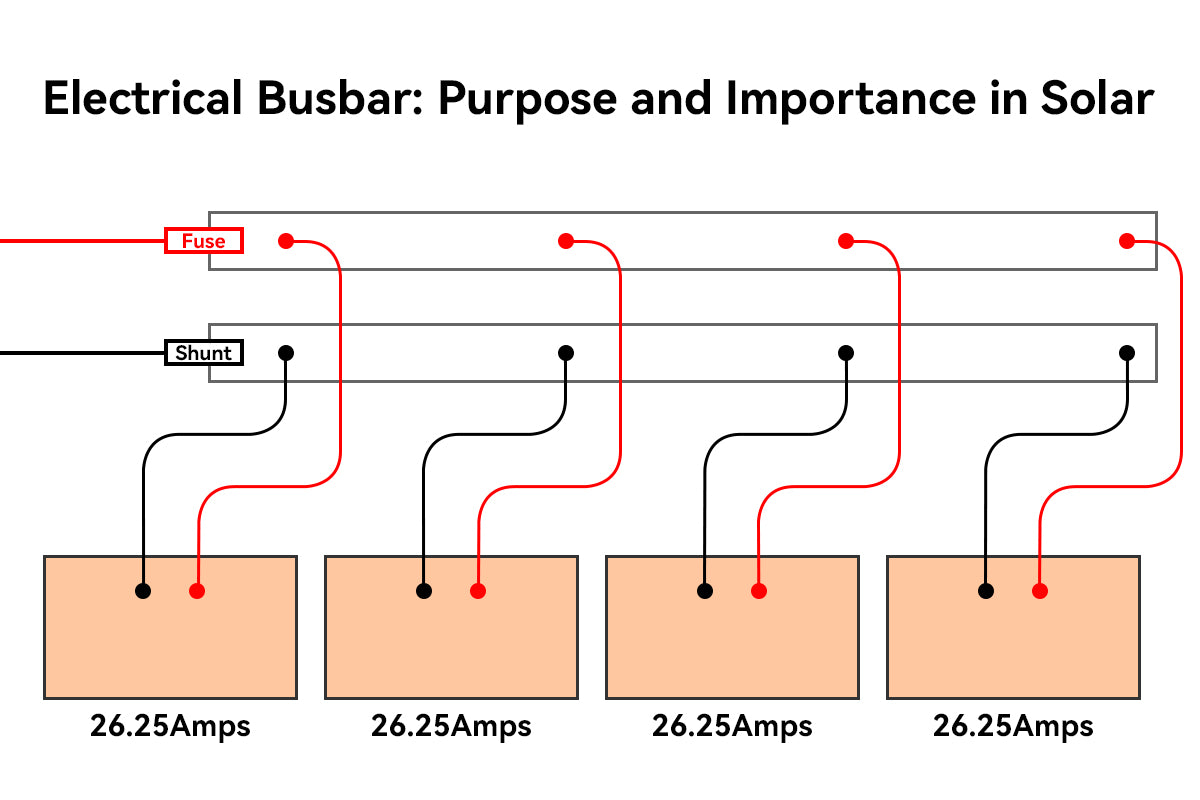A battery fuse may be a small component, but it plays a critical role in protecting your solar, automotive, or RV power system from wire damage, battery failure, or even fires.
In this article, we’ll explore what a battery fuse does, how to choose the correct size based on your system’s voltage, load, and fuse location, and how to install it safely. Whether you’re protecting a battery bank in a solar system, backup storage, or a car, understanding how battery fuses work is essential for any energy system.
What does a battery fuse do
A battery fuse is a crucial overcurrent protection device designed to interrupt the flow of electricity by melting when the current exceeds safe levels. This action protects your system from equipment damage, melted wires, and potential fire hazards.
While both fuses and battery circuit breakers serve the same purpose, a fuse reacts more quickly in the event of a short circuit or overload. This fast response makes fuses especially effective in high-risk DC systems, such as those used in solar power setups, vehicles, or RVs, where large surges of current can be dangerous.
What size fuse for battery
Determining the proper battery fuse size begins with understanding how much current your system draws. So, the size of the fuse in different position in a system varies.
Note:
The BMS protects the batteries, while fuses primarily protect the wires. Therefore, fuse ratings should be lower than the ampacity of the battery cables.
What size fuse between battery and inverter - Part1
The fuse between the battery and inverter is usually the largest in your battery system because inverters can draw very high currents, especially during startup or under heavy load.
1️⃣ When batteries are connected in series, the current remains the same, so you typically need a single fuse on the positive cable leading to the inverter. To calculate the correct fuse size for the batteries in series, use the formula:
Fuse Ampacity = Inverter Rated Power ÷ Efficiency ÷ Battery Voltage × 1.25
2️⃣ For systems using parallel or series-parallel battery banks, each parallel string should be individually fused. This prevents one faulty string from causing imbalance or backfeeding into others. Due to the current in the system is shared equally among parallel batteries, you must divide the inverter power across the number of parallel strings. The updated formula becomes:
Fuse Ampacity = Inverter Rated Power ÷ Number of Parallels ÷ Efficiency ÷ Battery Voltage × 1.25
Finally, after the paralleled batteries are combined, a single fuse should still be installed on the main positive cable connecting the battery bank to the inverter. This fuse should be sized based on the inverter’s total current demand, just as in a series-only configuration.
What size fuse between battery and charge controller - Part2
Sizing the fuse between the battery and the charge controller depends on the maximum current the charge controller is designed to handle. Because the solar charge controller regulates the charging current, the current flowing from the controller to the battery is relatively stable.
To size the fuse between the solar charge controller and the battery bank, use this formula:
Fuse Ampacity = Charge Controller’s Rated Current × 1.25
Therefore, a 100A fuse is adequate to protect the circuit between an 80A solar charge controller and the battery bank.
Note:
Always follow the manufacturer’s recommendation when available. The factor used in the following calculation is based on NEC standards and may vary depending on your country or local regulations. If no specific rule applies, a 1:1 ratio is advisable.
What is the fuse interrupt capacity current
Besides the fuse amp range sizing, the fuse ICC (Interrupting Capacity Current) is also a crucial factor when choosing a battery fuse. Unlike the amp range, which defines the continuous current a fuse can handle, the ICC refers to the maximum fault current the fuse can safely interrupt without exploding or causing damage to the circuit or surroundings, at or below its specified voltage, for example, a fuse rated for 6,000 amps at 32V DC, for instance, cannot be assumed safe at 48V.
It is essential to ensure that the battery’s short-circuit current, often 10 times its capacity or more, is within the fuse’s ICC rating for safe protection.
Different types of fuses have varying ICC ratings, which we will cover later.
How to connect fuse to battery
Theoretically, a fuse should be installed between the battery and both upstream and downstream components, such as an inverter, charge controller, or DC fuse box.
📌 To protect the wiring, the fuse should always be connected to the positive cable coming out of the battery. This placement allows the fuse to immediately disconnect power if a fault occurs in the connected circuit.
📌 To minimize the length of unprotected cable and reduce the risk of fire in the event of a short circuit near the battery, the fuse should be installed as close to the battery terminal as possible. Placing the fuse farther away leaves a section of wire vulnerable to high current before the fuse can react.
However, in real-world installations, the exact position and distance of the fuse may vary based on practical considerations. For example, in tight battery compartments, the fuse may be positioned slightly farther away to ensure safe and easy access for inspection or replacement.
In addition, the type of battery fuse used can affect the installation location. Let’s take a look at the different types of battery fuses.
Types of battery fuse
DC fuse is used to protect the battery system from overcurrent faults, preventing wire damage, equipment failure, and potential fire. Choosing the correct type of fuse depends on your system’s voltage, current, environment, and installation method.
Below are the most commonly used DC fuse types in solar, RV, marine, and automotive battery systems:
What is an ANL fuse
An ANL fuse is a high-current, bolt-down fuse commonly used in solar, RV, and marine power systems. It is typically installed in-line on the positive cable between the battery and key components such as inverters or charge controllers. It's also easy to inspect, thanks to its transparent covers or open-style holders.
ANL fuses are generally rated for up to 6,000 amps of interrupt current at 32V DC, so they can only be used in 12v or 24v battery setup.
What is MRBF fuse
The MRBF fuse is a compact, stud-mounted fuse designed to be installed directly on the battery terminal. It screws onto the positive battery post, functioning as both a fuse and a terminal. The load wire then connects to the top of the fuse, making it ideal for tight spaces layouts like those in marine vessels and RVs.
With an interrupt rating up to 10,000 amps and voltage ratings typically around 58V DC, MRBF fuses are a solid option for compact battery systems requiring clean and efficient wiring.
What is MEGA fuse
MEGA fuses are heavy-duty, bolt-down fuses designed for mid-to-high current protection. Similar to ANL fuses, they offer a more compact profile and often provide better arc suppression, though they lack direct visual inspection feature.
Their interrupt ratings typically range from 2,000 to 3,000 amps, with voltage ratings between 32V and 58V DC depending on the model.
What is MIDI fuse
MIDI fuse is a smaller version of MEGA, mounted with bolts in a dedicated fuse holder. MIDI fuses typically support 30A to 200A, with voltage ratings up to 58V DC and interrupt capacities around 1,000 to 2,000 amps. Their compact size and solid performance make them ideal for mid-range power circuits that don’t require high interrupt ratings.
What is class T fuse
Class T fuses offer extremely high interrupt ratings up to 200,000 amps, making them ideal for large inverter systems, battery banks, and commercial or industrial energy storage applications.
These fuses are fast-acting and installed close to the battery using specialized holders. Their high-speed protection and robust arc suppression make them one of the safest choices for high-power DC systems, particularly those operating at higher voltages and fault-current potentials.
What is Blade fuse
Blade fuses are small, plug-in fuses commonly used in automotive and low-power DC circuits. They are not designed for high-current applications, with typical interrupt ratings under 1,000 amps and low voltage limits.
While unsuitable for main battery protection, blade fuses are perfect for protecting individual components like lighting, pumps, or branch circuits within a solar system.
FAQs on battery fuse
Do I need to disconnect the battery to change the fuse?
Yes, it is recommended to disconnect the battery before changing the fuse. Disconnecting the battery ensures your safety by preventing accidental short circuits or electric shocks while handling the fuse. Always use proper protective equipment and follow safety procedures when working with battery systems.
How to check a battery fuse?
To check a battery fuse, first ensure the battery is disconnected for safety. Then, visually inspect the fuse for any signs of damage such as a broken filament, discoloration, or burn marks.
For a more accurate test, use a multimeter set to continuity or resistance mode to verify if the fuse is intact. A blown fuse will show no continuity or infinite resistance.



